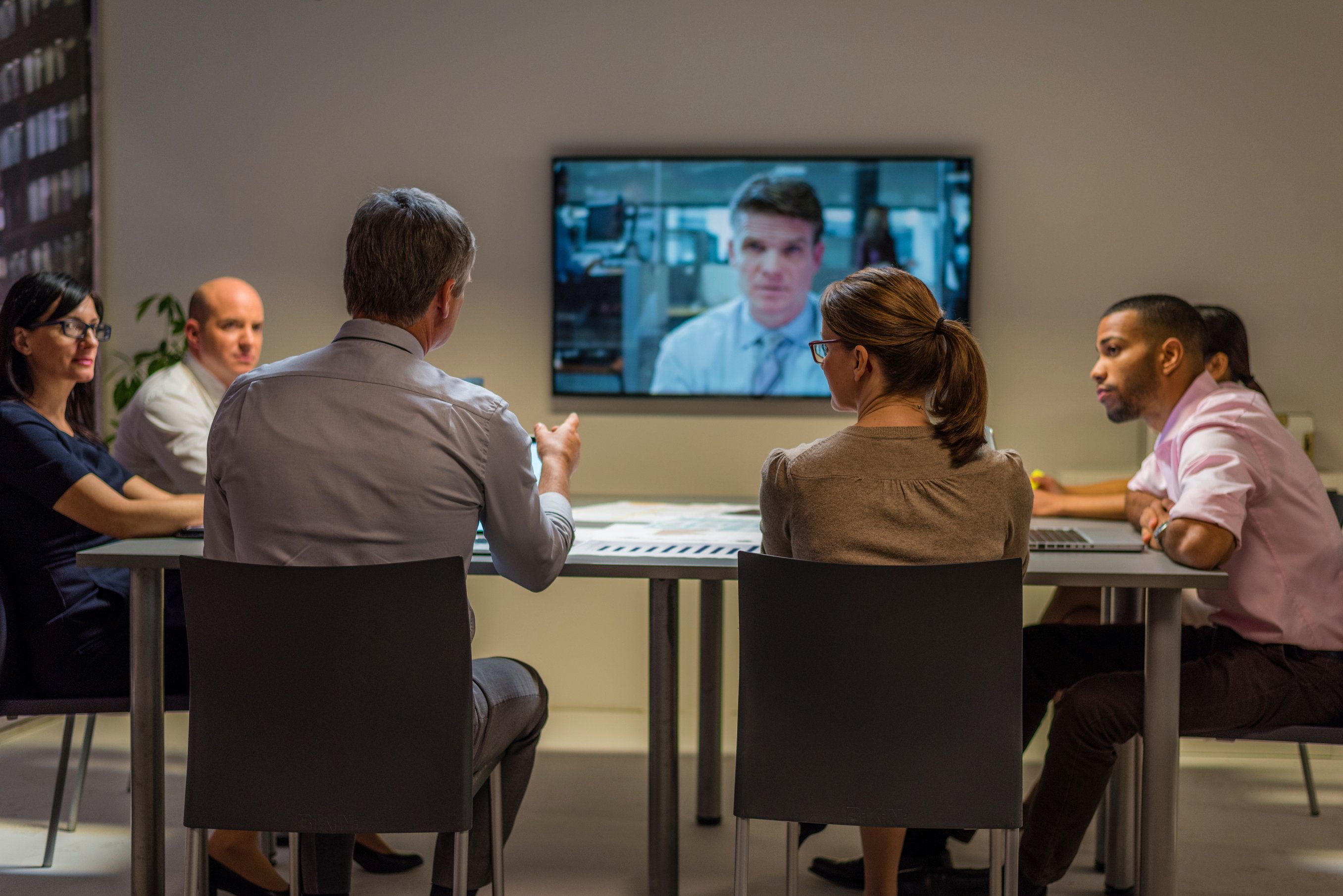Video conferencing was once in the realm of science fiction. Remember The Jetsons? No? Ask your parents. These days holding a meeting with several people who haven’t left their respective offices has become an almost indispensable part of business.
Yet while the advantages may seem obvious, not everyone is a dedicated fan of the technology. Let’s consider why some love, and some hate, video conferencing.
The pros
1. Cheaper than travelling
Whether it’s a taxi fare or an airfare, you’ll save money by connecting your people via the net.
2. No time limits
You’ll save time because travelling for an in-person meeting takes time, whether it’s ten minutes or a day or so. You’ll also have no limits as to what time of the day the tech is available. You can still bring everyone together at the same real time, even if for some that’s the morning, and for others, the night before. (But, see disadvantage #3 below…) Also, meetings with remote participants can more likely be scheduled at short notice.
3. More effective communication
It’s not just about seeing others in the meeting, but about sharing information with them. Video conferencing specialists ezTalks point out that you’ll also have “collaboration tools such as whiteboard, text exchange, file sharing, media sharing, screen sharing, remote control, electronic voting, and conference recording.” It can be a great training tool.
4. Better productivity
A video conference can be held anytime throughout the day, as a normal part of the workday. There’s less distracting lead-time, such as for travel. The meeting is likely to be shorter, and everyone can immediately get back to work to implement the decisions.
The cons
1. Technical glitches
There could be several weak links in the chain, from software to hardware to network failure. It may be next to impossible to have tech support staff at every location where you have a meeting participant, and most of those participants won’t have the smarts to fix the glitch. Even so, many a potential roadblock may come down to a loose cable or flat battery.
2. It’s less personal
Successful business often depends on strong relationships, which can be influenced by subtle body language in the meeting room. Video conferencing can make this a little bit more difficult.
3. Appearance anxiety
This may seem silly, after all, you’ll still be seen by everyone if you opt for an in-person meeting. But somehow, being on camera heightens that feeling of being too closely scrutinised.
4. International time zones
OK, so no one will be jetlagged at your video conference, but between Australia and Europe or the US, someone will be disadvantaged. Even if it’s not after midnight for anyone, no one likes to constantly be the odd one out who has to be at a meeting outside normal working hours.
5. Setup cost
This doesn’t have to be a disadvantage, but it could be if you choose the high-end options. For example, fully equipped telepresence systems could cost hundreds of thousands of dollars. But those options will limit any time lag between responses, and ensure good quality images. In any case, there will be some cost for hardware, software, and connectivity. At the lower end of the cost scale, the Video Conferencing Guide points out that “if you try to bypass paying for an expensive system by using a free multipoint service, you may be limited to how many participants you can have at once.”
For companies lacking dedicated facilities, another option is the rental of video conferencing-equipped meeting rooms.
Did you know that Karstens offers high-tech video conferencing facilities Australia-wide? Karstens’ video conferencing rooms can now connect with more than 2,500 video conferencing facilities worldwide, translating to a smarter way of working, using the latest convenient Polycom technology. Click here to learn more.




